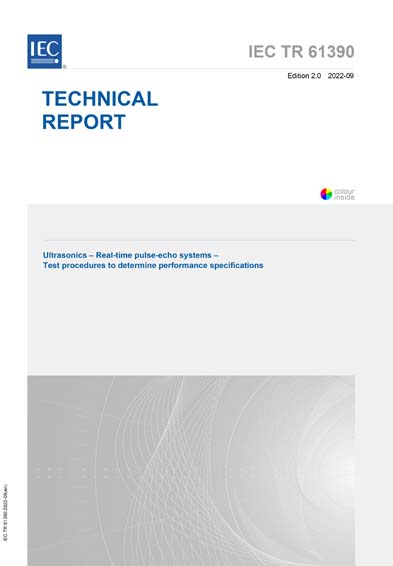Most recent
IEC/TR 61390 Ed. 2.0 en:2022
Ultrasonics - Real-time pulse-echo systems - Test procedures to determine performance specifications
IEC TR 61390:2022 describes representative methods of measuring the performance of complete real-time medical ultrasonic imaging equipment in the frequency range 0,5 MHz to 23 MHz.
This document is relevant for real-time ultrasonic scanners based on the pulse-echo principle, for the types listed below:
- mechanical sector scanner;
- electronic phased array sector scanner;
- electronic linear array scanner;
-electronic curved array sector scanner;
- water-bath scanner based on any of the above four scanning mechanisms;
- plane-wave/fast imaging scanners;
- combination of several of the above methods (e.g. a linear array phased at the edge to produce a sector there to enlarge the field of view.
The methods described are based on evaluation of:
- sonograms obtained by scanning of tissue mimicking objects (phantoms);
- sonograms obtained by scanning of artificial, low- or highly reflective targets in suitable environments;
- parameters of the ultrasound field transmitted by the measured scanner.
This document does not relate to methods for measuring electrical parameters of the scanner’s electronic systems.
IEC TR 61390:2022 cancels and replaces the first edition published in 1996. This edition constitutes a technical revision.
This edition includes the following significant technical changes with respect to the previous edition:
a) Several additional phantom designs are included in the main body of the document;
b) Several additional transducer types are included in the Scope;
c) Methods of analysis are presented in new Annex B.
International Electrotechnical Commission [iec]

